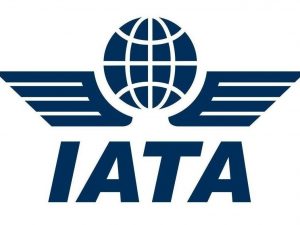India’s domestic traffic soared 21.8 per cent, marking the 20th month of double-digit traffic growth and the 13th consecutive month it has led the domestic markets. Growth is being propelled by the comparatively strong economic backdrop as well as by substantial increases in service frequencies, according to International Air Transport Association’s (IATA) global passenger traffic data for April. Demand for domestic travel climbed 4.1 per cent in April compared to April 2015, while capacity increased 3.8 per cent, causing load factor to rise 0.3 percentage points to 81.4 per cent. All markets reported demand increases with the exception of Brazil, which showed a 12.1 per cent decline, reflecting the country’s ongoing economic recession and political turmoil.
Read More »India’s domestic air travel soars 23% in Jan
India’s domestic air travel soared 22.9 per cent in January compared to a year ago. Growth is being propelled by the comparatively strong domestic economy and increases in air services. The Indian market overtook both Australia and Japan during 2015 and is currently level with Russia at around 1.2 per cent of global revenue passenger kilometers (RPKs). The International Air Transport Association (IATA) announced global passenger traffic results for January 2016 showing demand (RPKs) rose 7.1% compared to January 2015. This was ahead of the 2015 full year growth rate of 6.5%. January capacity rose 5.6%, with the result that load factor rose 1.1 percentage points to 78.8%, the highest load factor ever recorded for the first month of the year. Domestic air travel rose 6.8 per cent in January year-on-year. Capacity rose 5.1 per cent and load factor was 78.9 per cent, up 1.3 per cent percentage points. “January maintained the strong traffic growth trend seen in 2015, showing the resilience of demand for connectivity despite recent turmoil in equity markets.The record load factor is a result of strong demand for our product and airlines making the most productive use of their assets. Underlying conditions point to another strong year for passenger traffic, with the latestdecline in oil prices likely providing additional stimulus for air travel growth,” said Tony Tyler, IATA’s Director General and CEO. Domestic RPKs accounted for about 36% of the total market in 2015. It is most important for North American airlines as it is about 66% of their operations. In Latin America, domestic travel accounts for 46% of operations, primarily owing to the large Brazilian market. For Asia-Pacific carriers, the large markets in India, China …
Read More »Minimal focus on aviation
Expressing disatisfaction over the Budget ’16, Conrad Clifford, Regional Vice President, Asia Pacific, International Air Transport Association (IATA), said, “The budget had a minimal focus on aviation. We hope the government will do a better job with the National Civil Aviation Policy. While the NCAP is a step in the right direction, there are areas of concern, especially where it adds costs to the industry or where it deviates from well-established global standards. We hope the government will address three priority areas – retract the 2 per cent Regional Connectivity Fund levy, abandon the plan to auction traffic rights, and allow AERA to perform its functions independently by not enshrining any ‘Till’ for airport charges in the Policy document.”
Read More »25% growth in domestic air traffic in Nov
The domestic passenger air traffic in India has recorded very strong growth, up 25.1 per cent, during November 2015 compared to the same period in 2014. This was revealed by the International Air Transport Association (IATA), which released global passenger traffic results for November 2015, showing a continued strong traffic growth above the 10 year average rate of 5.6 per cent. The improvements in industry load factors have been largely driven by domestic markets, particularly in India, where there has been a significant improvement in matching capacity to demand and on-going economic strength, according to the report. Globally, domestic travel demand rose 6.4 per cent in November compared to November 2014 but results were mixed, with Brazil, Russia and Japan all showing declines. Total revenue passenger kilometres (RPKs) rose 5.9 per cent compared to November 2014. Though this is a weaker result than the October figure of 7.1 per cent but this has been termed as very healthy rate of growth despite factors which are likely to have a temporary affect. Data for the first ten months of the year show a 5 per cent decline in average fares in currency-adjusted terms. November capacity (available seat kilometres or ASKs) increased by 4.2 per cent, and load factor rose 1.3 percentage points to 78.0 per cent. “The airline industry is delivering solid financial and operational performance. The industry’s return on capital for 2015 and 2016 is expected to exceed its cost of capital, a very rare occurrence. This means we are on the path toward financial sustainability. Consumers are benefiting from lower fares, and airlines are able to invest in new aircraft that are more comfortable, quieter and more environmentally friendly,” …
Read More » Tourism Breaking News
Tourism Breaking News
